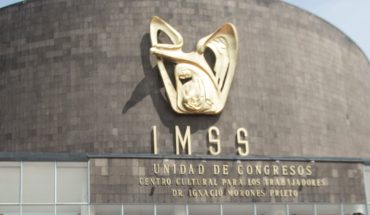“We expected the figure to be somewhat closer to 30,000 years ago.” Half a million years ago some ingenious individuals invented the tools that allowed us to advance as a species.
Why, during this era of extraordinary technological development, did human brains begin to shrink in size?
And it also raises questions about what a brain’s size actually reveals about an animal’s intelligence, or cognitive ability, in general.
Many species have much larger brains than ours and yet their intelligence, as far as we understand, is quite different.
DeSilva and his colleagues noted that human bodies have become smaller over time, but not enough to explain the reduction in brain volume.
The example of ants
The question of why this change occurred is still unresolved.
And so, in a recent article, they looked to an unlikely source for inspiration: the humble ant.
At first glance, ant brains may seem hopelessly different from our own.
They are about one-tenth of a cubic millimeter in volume, or one-third the size of a grain of salt, and contain only 250,000 neurons.
A human brain, by comparison, has about 86 billion.
But some ant societies share striking similarities with ours.
There are even species of ants that practice a form of agriculture in which they grow large amounts of fungi inside their nests.
These ants collect leaves and other plant materials to use on their farms before harvesting the fungus to eat.
When DeSilva’s team compared the brain size of several ant species, they found that sometimes those with large societies had developed larger brains — with the exception were those that had also developed this penchant for fungal cultivation.
This suggests that, at least for an ant, having a larger brain is important to get it right in a large society.
However, more complex social systems with a greater division of labor could, on the contrary, cause their brains to shrink.
That could be because cognitive abilities are divided and distributed among many members of the group, who have various roles to play.
In other words, intelligence becomes collective.
The Appearance of Writing
“What if that happened in humans?” says DeSilva.
“What if, in humans, we reached a population size threshold, a threshold at which individuals shared information and outsourced information into the brains of others?”
Another possibility is that the emergence of writing, which occurred approximately 2,000 years before the reduction in the size of the human brain occurred, also affected the process.
Writing is one of the relatively few things that separates us from all other species and DeSilva wonders if this could have influenced brain volume by “outsourcing information in writing and being able to communicate ideas by accessing information that is outside of your own brain.”
The numerous differences between ant brains and humans mean we need to be cautious about drawing conclusions too quickly.
That said, DeSilva argues that the possibility is a useful starting point for thinking about what caused the noticeable and relatively recent reduction in human brain volume.
These ideas remain hypotheses for now.
There are many other theories that attempt to explain the reduction in the size of the human brain.
However, quite a few of them become implausible if the brain shrinkage actually began as recently as 3,000 years ago.
A good example is domestication.
Dozens of different animals that have been domesticated, including dogs, have smaller brains than their wild ancestors.
But it is estimated that human self-domestication occurred tens of thousands, or even hundreds of thousands, of years ago, long before the brain shrank.
But do smaller brains mean that, as individuals, humans became more stupid?
Not really, unless you’re talking about subtle differences in a large population.
Massive study
In 2018, a team of researchers analyzed a large volume of data from the UK Biobank, a vast biomedical database containing, among other things, brain scans and IQ test results from thousands of people.
It contained information from 13,600 people, making it a larger study sample than any of thePrevious studies on brain size and IQ combined, says study co-author Philipp Koellinger, a behavioral geneticist at the Vrije Universiteit Amsterdam in the Netherlands.
The study revealed that having a larger brain was, on average, associated with slightly better performance on IQ tests, but, more importantly, the relationship was not deterministic.
That means there were some people who did very well on tests despite having relatively small brains and vice versa.
“There’s really no very strong relationship,” Koellinger says. “It’s everywhere.”
Structural differences are probably more significant in terms of a person’s overall cognitive ability than brain size.
That’s important in part because of how people have historically tried to categorize and classify people based on things like the size or shape of their heads.
“There’s a very ugly history in the Western world, the eugenics movement and all these kinds of things that have been based on these ideas about biodeterminism,” Koellinger says.
“The correlations we reported do not imply any kind of biodeterminism.”
Volume doesn’t explain everything
Because brain scans also revealed some information about the structure of people’s brains, not just their size, the study was able to detect something else that might be going on.
He found a relationship between gray matter volume, the outer layer of the brain, which has a particularly high number of neurons, and IQ test performance.
In fact, structural differences like that are probably more significant in terms of a person’s overall cognitive ability than the size of the brain organ.
“It would be crazy to think that volume can explain the whole difference,” says Simon Cox, who studies brain aging at the University of Edinburgh.
It might even be one of the least important factors, he adds.
This makes sense when you think about it.
There is no male and female brain.
Men’s brains are generally 11% larger in volume than women’s brains due to their larger body size.
But studies have found that, on average, women have an advantage in some cognitive skills and men in others.
Cox notes that other research he’s been involved in reveals how women’s brains can compensate for being smaller through structural differences.
For example, women have, on average, a thicker cortex (the layer that contains gray matter).
There are many features and facets of the brain that seem to affect cognitive ability.
Another example is myelination.
This refers to the covering of material surrounding axons, the long, thin “wires” that allow neurons to connect with other cells and form a neural network.
As people age, their myelin breaks down, which reduces the brain’s efficiency.
It is possible to detect this change by studying the ease with which water diffuses through brain tissue.
With reduced myelin, water flows more easily.
This is indicative of cognitive decline.
The brain remains “extremely complex,” Cox says, and it’s hard to know exactly what difference a particular brain’s structural makeup will make to a person’s intelligence.
It’s also worth noting that some people have partial brains due to developmental injuries or peculiarities and yet seem surprisingly unaffected.
A man in France who had a successful career as a civil servant was found to be missing 90% of his brain and yet had an IQ of 75 and a verbal IQ of 84, just slightly below the French average of 97.
However, exceptions can never be interpreted as the rule.
Ultimately, multiple studies suggest statistically significant, albeit subtle, links between intelligence and volume, the structure of the brain.
Animal kingdom
All of this becomes even more interesting when you consider the different brains of the animal kingdom.
We’ve already explored a comparison between human and ant brains, but what about other species?
What drives brains large or small to evolve?
Amy Balanoff, who studies brain evolution at Johns Hopkins University in Baltimore, Maryland, says brain tissue requires a lot of energy to grow and maintain, so a species is unlikely to develop a large brain unless it needs to..
Think of parasitic creatures that rely on relatively stable environments and resources, he suggests.
Lampreys have notoriously small brains only a few millimeters long, for example.
“They don’t really need to spend that extra energy on neural tissue, which is metabolically expensive,” Balanoff says.
In addition, some animals seem to have developed larger brains, relative to their body size, over time, but their brains haven’t actually changed, their bodies have simply become smaller.
This applies to bird species, Balanoff explains.
Then there are the animals that seem to have developed specialized brain regions, which increase the total size of their brains compared to similar species.
Take for example the mormid fish, which have fairly large brains relative to their body size, in fact, a proportion similar to that of humans.
These fish use electrical charges to communicate with each other and detect prey and, in 2018, researchers found that a particular part of their brain, the cerebellum, is unusually strong.
No one is sure why, but the authors of that study speculated that it could help fish process electrosensory information.
In humans, one area of the brain that marks us is the neocortex, which is involved in higher cognitive functions: conscious thinking, language processing, etc.
We certainly rely heavily on these things, so it makes sense for our brains to adapt to our needs.
Since it takes a lot of energy for the gears to keep spinning, it’s interesting to know that animals with large brains have evolved to acquire a lot of energy at an early stage of life, says Anjali Goswami, a paleobiologist at the Natural History Museum in London.
Think about the nutritional boost that birds receive even while in the egg, or that mammals receive through the placenta or breast milk.
Human babies are actually born with an excess of neurons, 100 billion, and this number decreases as they develop.
This is because brains fine-tune themselves according to the development and environment of the individual.
Only the really necessary parts of the neural network are preserved as we age, but having a brain well stocked with neurons early on is what makes it possible.
Mammals evolved in the shadow of dinosaurs, Goswami says.
They needed extremely good sensory abilities to survive, so they probably developed night habits and night vision.
It almost certainly had an impact on neuronal development.
As well as the requirement that primates, including our ancestors, develop the specialized motor skills needed to swing between trees.
The environment, then, put pressure on mammalian brains to develop capabilities that helped us out of difficult situations.
It is likely that many animals have benefited from having to accelerate their cognitive progress in a world full of challenges.
One study found that birds that colonized oceanic islands and therefore had to adapt to unpredictable new territory possessed larger brains than their continental counterparts.
However, by now it should be clear that you can’t simply measure the size of an animal’s brain, compare it to its body size, and come to definitive conclusions about how smart that animal is.
Size is just one piece of the puzzle.
Which is smarter, anyway, to think or survive?
Humans love to meditate but, as Goswami says, our planning capacity seems very poor if we consider our current struggles to face long-term existential problems, such as the climate crisis.
Cox notes another point: “There are many more things in life than having a higher overall cognitive ability score or a high IQ.”
It almost makes you wish our brains were even smaller.





